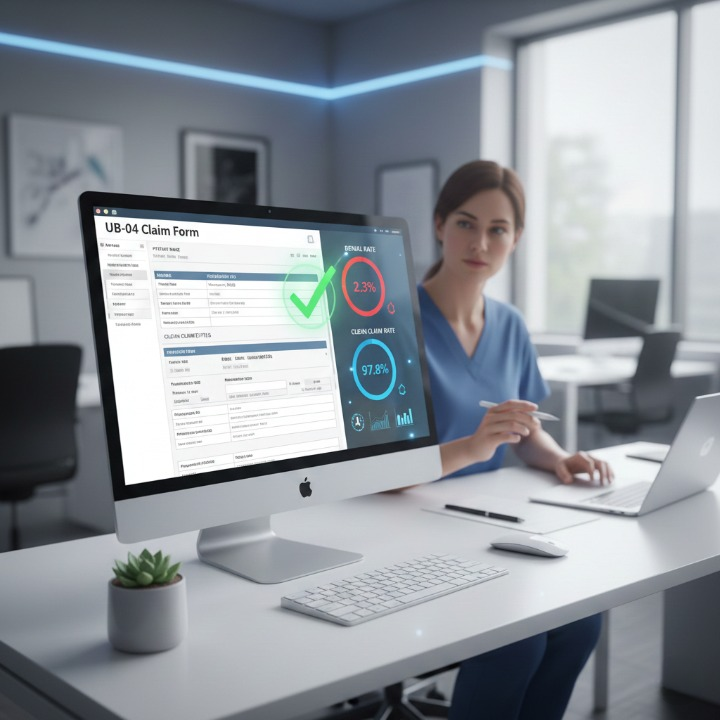Medical coding is a pivotal element of modern healthcare, translating patient diagnoses, treatments, and services into standardized codes. These codes are essential for accurate billing, timely reimbursements, and compliance with regulations. But traditional medical coding, often manual and time-intensive, has long been prone to errors.
Enter voice-activated medical coding—a revolutionary application of voice recognition and artificial intelligence (AI) that is transforming how healthcare professionals manage coding tasks. With its ability to enhance efficiency, reduce errors, and improve overall workflow, voice-activated medical coding is rapidly gaining traction in hospitals, clinics, and even telehealth practices.
This blog explores the concept of voice-activated medical coding, its benefits, real-world applications, challenges, and emerging trends. By the end, you’ll see why adopting this forward-looking solution can give your healthcare practice a competitive edge.
What is Voice-Activated Medical Coding?
Voice-activated medical coding is the integration of voice recognition technology, natural language processing (NLP), and sophisticated coding software to facilitate the accurate translation of medical information into coding systems like ICD-10, CPT, or HCPCS. Rather than relying on manual data entry, healthcare professionals can dictate medical notes directly, and the system processes the speech input into appropriate codes.
Here’s how it works in practice:
- Voice Recognition Technology transcribes the spoken input into textual information.
- Natural Language Processing analyzes the dictation to extract medical terms, procedures, and conditions.
- AI-Driven Coding Software matches the extracted information with the correct medical codes.
- The resulting coding suggestions undergo review by the user for accuracy.
Seamlessly integrated with Electronic Health Record (EHR) systems and other healthcare platforms, these tools are designed to improve data accuracy and operational workflows.
Key Technologies Behind Voice-Activated Medical Coding:
- Speech Recognition (e.g., Nuance Dragon Medical One): Converts spoken words into text in real time with accuracy.
- Natural Language Understanding (NLU): Detects and interprets context in complex medical terminologies.
- AI-Driven Algorithms: Identify patterns, learns from data, and ensure proper coding suggestions.
Used by solo practitioners and large hospitals alike, this innovative approach is streamlining the medical coding industry.
Benefits of Voice-Activated Medical Coding
Voice-activated medical coding offers numerous advantages that make it an appealing solution for healthcare providers.
1. Increased Efficiency and Productivity
Voice-activated coding can reduce coding time by up to 40% compared to traditional methods. Physicians and administrative staff can quickly dictate notes, allowing them to focus on patient care instead of tedious paperwork.
2. Reduced Errors
Manual data entry accounts for up to 30% of medical coding errors. Voice-activated systems leverage AI and NLP to ensure coding is accurate and compliant with regulatory standards, minimizing errors that can lead to rejected claims or legal issues.
3. Cost Savings
By enhancing coding speed and accuracy, these systems help healthcare organizations reduce operational costs associated with claim resubmissions, compliance audits, and staff workload.
4. Improved Work-Life Balance
Medical professionals face increasing administrative burdens. By offloading much of the coding workload to voice-activated systems, healthcare providers can focus on patient needs and enjoy a better work-life balance.
5. Remote Collaboration
Cloud-based voice-activated medical coding solutions allow remote coding teams to collaborate seamlessly, enabling practices to manage operations efficiently from anywhere.
These advantages collectively improve the quality of care, operational efficiency, and job satisfaction for healthcare teams.
Challenges and Solutions
No technology is without its challenges, and voice-activated medical coding is no exception. However, these obstacles are surmountable with thoughtful implementation and innovation.
1. Accuracy and Reliability
Voice recognition software may sometimes misinterpret medical terms, especially complex or uncommon ones.
Solution: Regularly update software vocabulary with industry-specific terms and use AI training models to adapt to individual speech patterns.
2. Integration with Existing Systems
Adopting new technology often encounters compatibility issues.
Solution: Choose platforms like 3M MModal Fluency Direct or Nuance Dragon Medical One, which are built for seamless integration with EHR systems and other healthcare platforms.
3. Training and Adoption
Resistance to change can slow adoption, especially among staff unfamiliar with voice-activated technology.
Solution: Provide comprehensive training sessions and ongoing support to make the transition smooth. Highlight productivity gains and workflow efficiency to foster buy-in.
4. Data Security and Privacy
Healthcare data breaches are a serious threat, especially with cloud-based solutions.
Solution: Ensure that the software complies with HIPAA regulations, uses encryption, and includes robust security protocols to protect sensitive patient information.
By addressing these challenges, healthcare providers can unlock the full potential of voice-activated medical coding.
Real-World Applications and Case Studies
From large hospitals to rural clinics, voice-activated medical coding has seen impressive success stories worldwide.
1. Hospitals
A hospital network in California implemented Nuance Dragon and observed a 30% increase in coding efficiency. This resulted in quicker billing cycles, reduced administrative costs, and improved revenue.
2. Private Practices
A small clinic in Texas reported a 20% reduction in coding errors after adopting voice-activated tools. This improvement enhanced compliance and minimized revenue leakage.
3. Telehealth Services
Remote healthcare providers saw significant improvements in coding accuracy and team collaboration by using cloud-based voice-activated software.
4. Independent Coders
A coding specialist in New York improved their productivity by 40%, completing more cases while maintaining top-tier accuracy.
These examples highlight the versatility and measurable impact of voice-activated medical coding across diverse healthcare settings.
Future Trends in Voice-Activated Medical Coding
The evolution of voice-activated medical coding continues to offer exciting possibilities for the future of healthcare.
1. AI and Machine Learning Advancements
Voice-activated tools will become smarter with predictive coding capabilities, anticipating complex coding requirements with unmatched precision.
2. Integration with EHR Systems
Deeper integration with EHR platforms will enable real-time updates, ensuring smoother workflows.
3. Specialized Coding
Voice-activated solutions are expanding to cover niche medical fields, such as radiology and oncology, offering tailored coding support.
4. Enhanced Cybersecurity Protocols
Future innovations will improve data encryption and introduce advanced tools to ensure compliance with evolving patient privacy laws.
These trends promise to take the capabilities of voice-activated medical coding to new heights, empowering healthcare professionals further
Transform Your Medical Coding Now
Voice-activated medical coding is more than a technological advancement; it’s a long-term solution to the pressing challenges of medical coding inefficiencies, inaccuracies, and administrative burden. By adopting this powerful tool, healthcare systems can unlock new productivity levels, accuracy, and cost savings.
Don’t wait for the future to arrive. Transform your practice today with voice-activated medical coding and stay ahead in an industry that’s always evolving.
Explore how your organization can implement this innovation and discover the difference. The future of medical coding is just a conversation away.
Voice-activated medical coding uses AI-powered voice assistants to listen to and transcribe clinical conversations in real time, then automatically generate appropriate medical codes (ICD-10, CPT, etc.) based on context.
No, general-purpose voice assistants like Alexa or Siri are not HIPAA-compliant. Specialized medical AI tools such as Nabla, Suki AI, or Nuance Dragon Medical One are built with HIPAA-compliant features.
Reduces administrative burden
Improves coding accuracy
Speeds up claim processing
Enhances physician productivity
Minimizes documentation errors
While highly beneficial for primary care, internal medicine, and behavioural health, some highly specialized fields (like surgical subspecialties) may need customized AI training for maximum effectiveness.
Not entirely. These tools assist coders by automating routine work and enhancing accuracy, but human oversight is still required to ensure regulatory and billing compliance.










